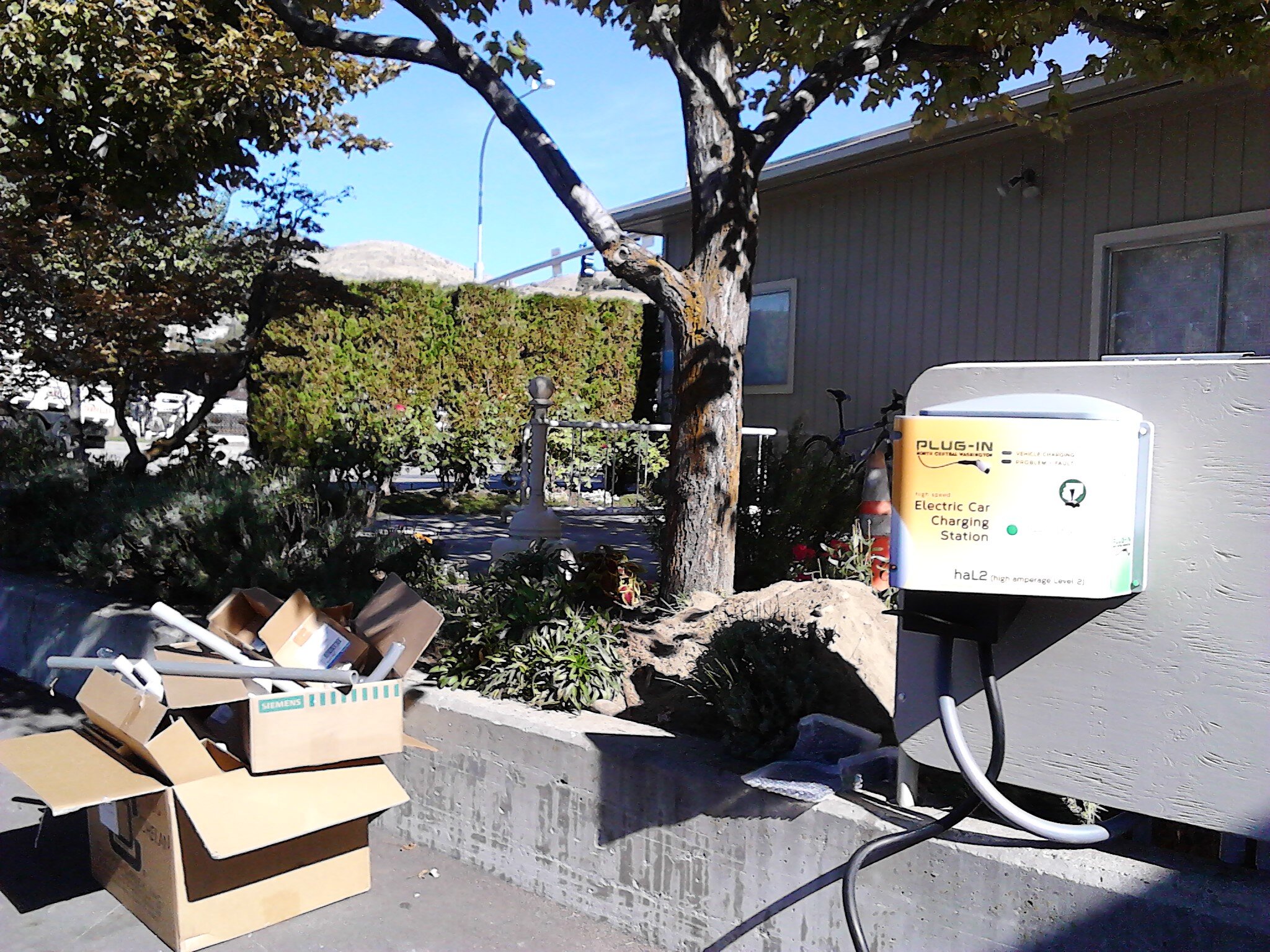One Story of EV Ownership Evolution in Central Washington
Campbells Resort on Lake Chelan was an early Host of an 80A Level II charger.
Mass-produced electric cars have been available for nearly a decade. When we sold our gas car about 5 years ago we wondered what it’d be like finding places to charge. We weren’t too worried because we planned to plug in at home most of the time. But what about road trips? Initially it took some planning, but things have quickly changed. Today most places have so many options we don’t have to think too much about it.
2014 and 2015: The Early Years
We bought a used Chevy Volt in 2014. The car had no fast charging option, only the standard “J-plug” that all EVs can use. It also had a small gas engine to charge the small battery when it was depleted but we avoided using it most of the time. For the next year or two we came to expect that it would be easy to find “regular” EV charging stations in places like Seattle, Spokane, even Wenatchee. And, thanks to Plug In NCW it wasn’t that hard to find them in places like Pateros, Tonasket, and Waterville where we often decided to stop and eat while we charged. Still, it took some planning before leaving home to maximize our all-electric miles.
2016 and 2017: EVs Become Common in Washington
We bought a used Nissan Leaf in 2016. No gas engine here, only a battery, and not a very big one. It had a fast charger built in, which is how we got it home from Edmonds. The sales manager at Nissan looked skeptical when we said we were headed back to Leavenworth, but we knew better. Later we took it back and forth to the West side what seemed like a zillion times, getting to know places like Skykomish and Sultan because they had fast chargers. Slowly we noticed that fewer people were asking us about EVs which we took as a great sign of how ordinary they were becoming.
2018: Fully Committed
Thinking about selling our first EV at 55,000 miles with a lifetime of better than 150 mpg was a mixed bag of emotions. We loved the Volt! When operated in electric mode it cost less than one penny per mile. But on long trips it used small amounts of gas which we wanted to completely avoid. It also needed occasional oil changes and would eventually need engine maintenance and repairs that an EV would never need. (You might be wondering about EV maintenance and repairs. Basically, there aren’t any.) Larger batteries were becoming available, the new 100% electric Bolt was a great deal, so we sold the Volt to trusted friends, and we bought our first new car that spring. (PS General Motors: what were you thinking when you gave two new models nearly the same name?)
2019: So Much Has Changed
A few months later we drove to Crater Lake via Hwy 97. The E side of the Cascades had way fewer charging options compared to the W side (on I-5 Canada to Mexico would have been easy), but we liked the scenery better. We used apps to locate chargers where we wanted to eat, and found that hotels could almost always make available a regular 3-prong outlet (better than nothing for overnight), and many campgrounds had high-power RV outlets (these are great). By 2019 there were so many new fast chargers along the interstates in OR, ID, and UT that a trip to the Grand Canyon took two days, just like a gas car.
2020: Feeling Like Experts Now
By late June it looked like Covid wasn’t going away any time soon. Lava Beds National Monument in California was an out of the way place. And there were so many new places to charge along the way while eating food brought from home. In July we visited an empty college campus in Boulder and spent a couple of days exploring Black Canyon National Park (where we were not the only electric car). It was easy-peasy to charge a car everyplace went in Colorado too. August was a great time to socially distance on the remote beaches and trails in Redwoods National Park. Along the way we passed by numerous charging stations that didn’t exist just two years earlier, noted all the “coming soon” locations posted to the PlugShare app, and made friends with owners of new EVs such as the big Audi e-tron which charges super fast and looks super cool!
Suggestions for You
If you’re concerned about where to charge during a long trip, check a website like Plugshare.com, or let the car’s navigation system find them for you. In addition to “how far can it go?” you should think about “how fast can it charge?” Tesla has a huge lead here, but even EVs from economy brands are getting much faster. Fast charging is not our Bolt’s strongest suit, but it works. You also might want to keep an eye on the few remaining gaps in America where the lack of fast chargers seems almost intentional. Hello, South Dakota? We’d like to visit Badlands but until you install fast charging stations we’ll be spending our money elsewhere and going to places like Yellowstone instead.

